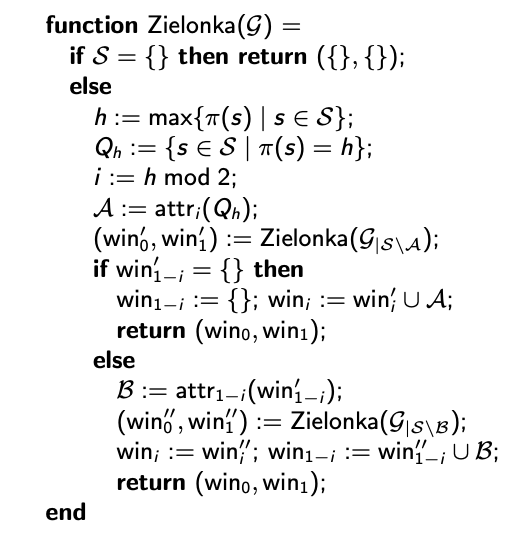Here is the Zielonka algorithm:

In the example, the player i owning states Qh={s0,s7} with the highest rank h=9 is i=1. Thus, we first compute A := attractor(1,Qh) := {s0,s1,s2,s3,s4,s6,s7}.
Removing these states from the game just leaves state s5 with a self-loop. It is therefore clear that this game is won by player 0 so that we get as solution of that game winA0={s5}; winA1={}.
Considering the algorithm, we now have to check whether winA_{1-i}=winA0={s5} is empty. Since that is not the case, we have to compute the attractor B := attractor(0,winA0) := attractor(0,{s5}) := {s0,s5,s7}, which is justified as follows: s0 is owned by player 0 and has a transition to s5, and s7 is owned by player 1, but there is only the transition to s5, so that player 1 has to choose that one. The other states are all owned by player 1 and have transitions to other states.
Note that in the algorithm, the indices are sometimes 1-i and not i-1. Maybe you are confused with this, since you mixed that up in your question.